Rachel Neumeier's Blog, page 76
April 13, 2023
Frigates and ChatGPT
This post on Writer Unboxed caught my eye: On Frigates and ChatGPT
This post starts with a poem by Emily Dickinson:
There is no Frigate like a Book
To take us Lands away
Nor any Coursers like a Page
Of prancing Poetry –
This Traverse may the poorest take
Without oppress of Toll –
How frugal is the Chariot
That bears the Human Soul –
I’ve always particularly liked Emily Dickinson, and this poem is so appropriate when thinking about fiction. That’s exactly what fiction is supposed to do: take us lands away. Also, just offhand, I would agree that this is exactly what fake fiction generated by AI programs has no hope of doing. I presume that’s what the linked post is going to argue, and I don’t think it needs argument. I think it’s plainly impossible for a non-conscious text generator to create fiction that is thematically coherent and meaningful, never mind coherent in terms of plot and characterization.
Let’s see what the post is actually saying, however:
How do you see the world? This is the tacit question we ask an author each time we slip into a story. Reading is the closest we can be to understanding another person’s way of seeing. We are all trapped within our own consciousness. We peer through frames we are often unaware of such as culture and language, family and upbringing. Even the physiology of our eyes plays a role in determining how near or far we can see, as well as the colors and shapes of the world around us.
Yes, well, differences in sensory experience are one thing, and differences in the experience of imagination are another, and those differences can be important and interesting. But surely what we mean here by “How do you see the world?” is “How do you see the world philosophically?” Or even, “How do you see the world morally?”
More than that, fiction also asks, “How would this other person see the world? This person who is not me and also not exactly the author? What would it be like to see the world this way?”
All those questions are obviously meaningless with fake fiction generated by non-conscious text generators. That’s why “artificial intelligence” is a misnomer, and one that I think may not be harmless. The things aren’t any more conscious than a tree, far less a dog. They generate the appearance of intelligence without the least trace of actual intelligence. It’s really odd to think about.
I haven’t yet seen student essays that I can easily tell are ChatGPT-generated, but I really am not concerned that text generators will be able to create coherent stories for a good while yet. I wonder if I could be wrong? I don’t think I can be, at the level of a novel. There’s just too much in a novel. Maybe a really short story where everything is a clever plot twist and there’s no depth? I’d be interested in seeing some of the fake stories being received by short story publishers now.
Meanwhile:
There is no Frigate like a Book
To take us Lands away

Image by Ilse Orsel on Unsplash
Please Feel Free to Share:






The post Frigates and ChatGPT appeared first on Rachel Neumeier.
April 12, 2023
How to Get Away with Murder
An entertaining, but hopefully not helpful, post at Kill Zone Blog: How to Get Away with Murder
What Not to Do
a. Don’t leave evidence behind
b. Don’t take evidence with you as a little souvenir
c. Don’t get seen
d. Never confess
You know, I’m remembering one or another true-crime book I’ve read where the murderer hires some lowlife, undependable, incompetent guy to actually do the deed. What a terrible idea! It seems absolutely rock-bottom obvious that you should absolutely not involve random other people in your crimes. Do it yourself.
I guess that’s part of point (c).
Of course modern forensics is good enough that it can be tricky to avoid leaving evidence behind. Everyone who reads murder mysteries knows that murderers are always making little mistakes that turn out to be their downfall.
Meanwhile:
What to Do:
a. Cause an arterial gas embolism
b. Poison
c. Oh, there’s no (c), just those two methods.
Well, that’s chintzy. I certainly expect blogs offering suggestions about how to get away with murder to offer a few more options.
Not that there’s anything wrong with arterial gas embolism, other than getting your victim to hold still while you inject an air bubble.
Anyway! Here is a funny and more extensive article about how to get away with murder. I trust you’ll enjoy it without finding it of any practical use.
Always do it all yourself. The fewer people you include, the fewer people you will have to kill later. If you want to get away with murder, no one else can know about it. Not your mom, not the cat. You should probably avoid even making eye contact with anyone while you’re thinking about the murder. Maybe that person is clairvoyant. You don’t know. The more people who know about your murder the more people you may have to someday murder to keep them quiet. Because they’ll blackmail you and stuff; people are such creeps. And word to the wise: if you build an awesome killer ninja robot to be your accomplice, then you will have to take the whole thing apart after the murder is done and then hide all the bloody pieces. Don’t accumulate witnesses or conspirators. It will only increase your chances of getting caught.
See? That is very good advice. Especially about watching out for possible clairvoyants.
Please Feel Free to Share:






The post How to Get Away with Murder appeared first on Rachel Neumeier.
April 11, 2023
Handling Editorial Feedback
From Writer Unboxed: Handling Editorial Feedback Without Getting Overwhelmed
I’m sharing this post because so much of this method rings true to me. Of course, “rings true to me” means I personally deal with editorial feedback pretty much this way, not that everyone else in the universe deals, or ought to deal, with editorial feedback this way. Nevertheless, I think this is a good and useful method of dealing with editorial feedback.
Editorial feedback, by the way, is large-scale critique on things like pacing and whether certain scenes are effective (or, indeed, necessary); the way tension is handled; whether characters act in ways that are in character; all that big stuff. It’s got nothing to do with proofreading. Dealing with proofreading feedback is super easy: fix all the mistakes and make decisions about all the comma queries, boom, done. Editorial feedback takes a lot more thought.
Here is how this post suggests handling that:
Only read feedback when in a good frame of mindRead it all once and then do nothing for a few daysBreak down the feedback into bulleted listsEach list depends on what editorial feedback I received. I cut and paste all the points raised into lists in a new document. When I’m done, I have several pages of concrete things I need to fix in the novel. I cross each one off as I fix it in the manuscript, so I can track whether or not I’ve addressed all the issues I needed to. An example of list categories:Minor fixes – Anything easy to search and replace, involves one line of work to fix, or involves one scene.Character – Note any inconsistencies, or backstory that need fleshing out more, and how to fix it, if I can.Worldbuilding – Note inconsistencies, or things that need to be better explained.Plot Issues – Subplots, or plot holes that need fixing and how they can be fixed.Major issues – Things that I need to thread through large chunks of the story. For example, fixing the pacing in the first half of the novel, or redoing the motivation for one character.
Finish my story outlineTag everything I can fix in my feedback listsFix all the easy things first Go through the manuscript beginning to end, with my list of fixes beside me for reference
Comments under every point at the linked post.
Here are the steps I personally follow:
Read through the editorial comments, paying particular attention to positive comments and skimming critique.Do nothing for a couple of days.Turn the critique into a bulleted list of things to address.Fix all the easy things first, using strikethrough on those bullet points or deleting the bullet points as each is completed.Work through the items until nothing but really big issues, including clarifying the motivation of characters and stuff like that.Go through the manuscript from beginning to end.I do think it helps tremendously to turn paragraphs of critique into a bulleted list of items to address, with or without comments about how to address those items. That’s why I left that step more detailed in the list above. These categories of items to fix do fairly closely follow the categories I also find helpful.
And I also think it helps a lot to strikethrough or delete items as soon as I feel they are satisfactorily completed. If I’m not sure, then I may use other techniques, such as bolding the list and de-bolding any items that I think have been satisfactorily completed, but feel I may want to re-evaluate later. Going through the manuscript from beginning to end is the re-evaluation process.
I don’t do anything similar to the OP’s step four — completing the story outline. But it’s kind of a neat idea. I’ll write down one sentence description for each scene in the book, numbered by chapter and scene. For ex. 5-1 = Chapter 5, Scene 1. This helps me find all the places where I need to fix things, and when things happened. I hold all that in my head, and frankly I can see that there’s probably a lot to be said for this outline method.
I should add one more step:
7. Send the manuscript to one more trusted beta reader or back to your editor and specifically ask whether, eg, the pacing now seems to work better.
You’re not likely to be able to tell. Or at least, I’m not likely to be able to tell. Not just pacing issues can be hard to judge; for me, a last query can ask, “Does the character arc for [this character] work for you?” Or even more open ended: Does [this character] work for you? That is the most important thing for me, or one of the most important things, and sometimes it’s hard to tell, particularly after repeated revisions. Beta readers who are especially focused on relationships are therefore especially helpful in getting a final thumbs up regarding the coherence and believability of character arcs and the relationships between characters.
Anyway, good post, click through to read the whole thing.
Please Feel Free to Share:






The post Handling Editorial Feedback appeared first on Rachel Neumeier.
April 10, 2023
Happy Easter!
Wow, HUGE emotional roller coaster this past Easter weekend.
Morgan’s Blenheim puppy, we’ll call him Ex-Easy Puppy, developed digestive problems and apparent nausea (hypersalivation) late Thursday. He quit nursing completely. I put him on Kaopectate, the real thing that is kaolin and pectin, plus Pedialyte.
So then he started having seizures. He had maybe six starting at midnight and then on into early Friday morning. I called my vet, thinking I was just going to have to put him down, but my vet said, no, let’s not do that just yet, let’s hope that’s low blood sugar. She added, “Last week, I had a puppy that presented just like this and that problem turned out on necropsy to be meningitis. Or it could be hydrocephalus, though the head looks normal. Or … you know what, let’s hope for low blood sugar.”
So I gave the puppy 20 cc formula by tube, which he did not appreciate, and which did not stop the seizures. I finally thought of giving him Karo syrup directly into his mouth, and I guess that did the trick because it’s now been 48 hours and no more seizures.
What I have now: a puppy who absolutely, positively will not nurse. Morgan has ample milk. Nope. This puppy is one hundred percent not going to nurse. I suggested that maybe he might prefer to nurse from Leda. Nope. He will not nurse at all.
He is impossible to tube feed; as soon as he started feeling better, he became just impossible to feed that way. He’s too strong and he fights the tube too hard. BUT, he will take Esbilac milk replacer by syringe — I have a nipple attachment for a syringe, which is proving useful. He’ll take 40 cc at a time with enthusiasm, and he’s gaining weight and acting normal and seems perfectly fine. He’s snuggling with his mother and showing the early signs of play behavior, just like his So-Far Easy Tri brother.

So … this is certainly in keeping with the rule that EVERY SINGLE LITTER will present a problem that you have never seen before.
You can often get a puppy to lap milk out of a dish between three and four weeks of age. These puppies are three weeks old today. He’s not able to lap as of this morning, but hopefully in a few days.
Meanwhile, Leda’s puppies are doing fine [she says cautiously].

They’re all up to a pound or so. I give one or another five ccs of formula by tube now and then, but not very often. Just if the puppy seems to have stalled out in terms of weight gain. They’re just fine [so far]. They’re twelve days old today. I may take Leda’s stitches out this afternoon, though they’re not bothering her as far as I can tell, so there’s no rush.
MEANWHILE
I’ve finished proofing and correcting TASMAKAT, so that one is ready to go out to other proofreaders. Whew, that was a job. I did lots of tweaking. Want to know how many actual typos I found? Six. My mother found several dozen, but me? Nope, six. Does that indicate that my EXTREMELY close reading as I cut the manuscript hard multiple times, cleared out all the typos? MAYBE. But my guess is, no. I actually have a bet with myself that proofreaders will find, all together, approximately 180 typos that I have missed. I mean actual, obvious, egregious typos. Usually it’s about sixty, and this book is about three times the normal length, so there you go, 180 typos.
COMING UP
I guess I can either focus on the TUYO World Companion or else start the INVICTUS revision. In practice, probably I’ll kind of do both, switching back and forth depending on how much time I have in a solid block. The puppies are definitely distracting. Provided nothing else goes wrong and the Ex-Easy Puppy thrives, he and his brother will hit Ultimate Cuteness in about two weeks, the little puppies nine or ten days after that. That will present a different kind of distraction. Nevertheless, I assume I’ll be making progress on something, hopefully multiple things, through the rest of this month and into May.
My goal remains: finish the INVICTUS revision by the end of May. My new goal is: Also the TUYO World Companion, preferably also by the end of May, but we’ll see how realistic that looks as we get there. Ideally I will indeed be able to focus on something new — SILVER CIRCLE — this summer.
Please Feel Free to Share:






The post Happy Easter! appeared first on Rachel Neumeier.
April 7, 2023
Historical Fiction Set in China
From Book Riot: 20 MUST-READ HISTORICAL FICTION BOOKS SET IN CHINA
What would you put on this list? I immediately thought of GGK’s Under Heaven, even though it’s fantasy rather than historical. Nevertheless. Beautiful novel, as one expects from Kay.
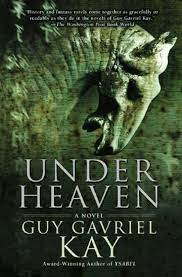
Shen Tai, son of an illustrious general serving the Emperor of Kitai, has spent two years honoring the memory of his late father by burying the bones of the dead from both armies at the site of one of his father’s last great battles. In recognition of his labors and his filial piety, an unlikely source has sent him a dangerous gift: 250 Sardian horses.
Green Dragon White Tiger, a novel I’ve read several times, thought not recently.
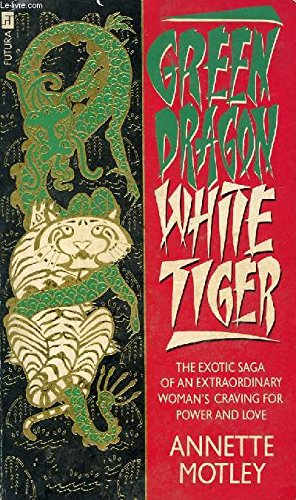
Inspired by the life of the seventh-century Empress Wu, the only woman to rule China from the Dragon Throne, this novel chronicles the life of Black Jade and her rise from concubine to Empress of China
It’s a beautifully written novel, but fairly grim in places, no doubt because the historical events were fairly grim at times.
Pearl Buck also wrote a novel about an Empress of China: Tzu Hsi. I’ve never read this one.
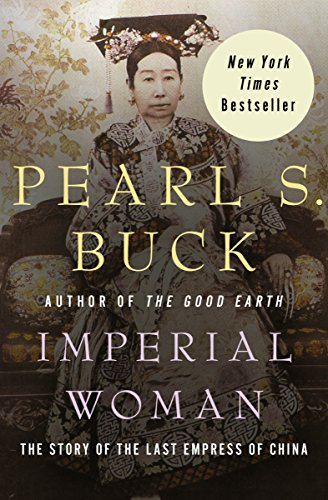
Already set apart on account of her beauty, she’s determined to be the emperor’s favorite, and devotes all of her talent and cunning to the task. When the emperor dies, she finds herself in a role of supreme power, one she’ll command for nearly fifty years. Much has been written about Tzu Hsi, but no other novel recreates her life—the extraordinary personality, together with the world of court intrigue and the period of national turmoil with which she dealt—as well as Imperial Woman.
I’ve admired other books of Pearl Buck’s, but I haven’t ever tried this one. I do enjoy historicals, though I prefer a light hand with horrific events and an ending that is no worse than ambiguous.
Oh, look at this! Here’s a novel that’s a fictionalization of Pearl Buck’s life! Wow, that is totally unexpected and super cool.
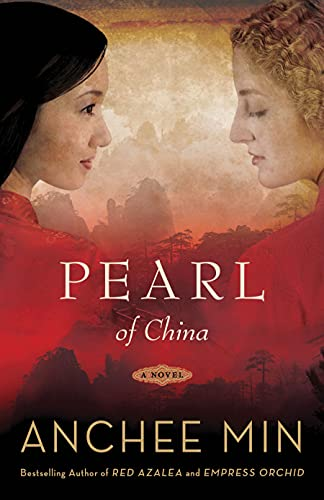
Pearl is head-strong, independent and fiercely intelligent, and will grow up to be Pearl S Buck, the Pulitzer- and Nobel Prize-winning writer and humanitarian activist, but for now all Willow knows is that she has never met anyone like her in all her life. From the start the two are thick as thieves, but when the Boxer Rebellion rocks the nation, Pearl’s family is forced to leave China to flee religious persecution. As the twentieth century unfolds in all its turmoil, through right-wing military coups and Mao’s Red Revolution, through bad marriages and broken dreams, the two girls cling to their lifelong friendship across the sea.
Okay, moving on, thinking of books about Empress Wu, particularly novels that do not spare the grim details, naturally makes me think of She Who Became the Sun by Shelley Parker-Chan.
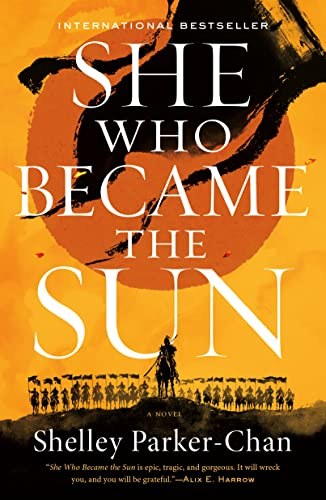
Maybe someday I’ll try it. I’m sure it’s very good.
Meanwhile, what 20 historicals does this Book Riot post suggest? Let’s take a look … oh, I see some historical fantasies here. Good. I like both straight historicals and historical fantasy.
Ah, more novels featuring Empress Wu and Empress Tzu Hsi: Empress by Shan Sai and Empress Orchid by Anchee Min, respectively. I note that Min is the person who wrote the historical about Pearl S Buck, mentioned above.
I’m going to end with a novel that sounds particularly inviting: Jade Dragon Mountain
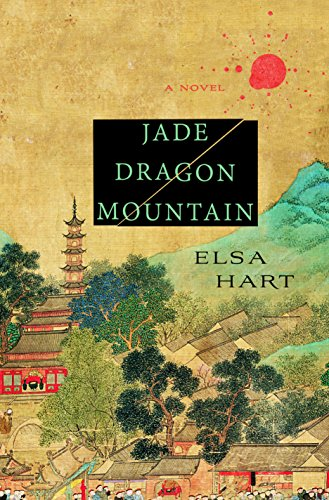
On the mountainous border of China and Tibet in 1708, a detective must learn what a killer already knows: that empires rise and fall on the strength of the stories they tell.
Li Du was an imperial librarian. Now he is an exile. Arriving in Dayan, the last Chinese town before the Tibetan border, he is surprised to find it teeming with travelers, soldiers, and merchants. All have come for a spectacle unprecedented in this remote province: an eclipse of the sun commanded by the Emperor himself. When a Jesuit astronomer is found murdered in the home of the local magistrate, blame is hastily placed on Tibetan bandits. But Li Du suspects this was no random killing. Everyone has secrets: the ambitious magistrate, the powerful consort, the bitter servant, the irreproachable secretary, the East India Company merchant, the nervous missionary, and the traveling storyteller who can’t keep his own story straight.
Beyond the sloping roofs and festival banners, Li Du can see the mountain pass that will take him out of China forever. He must choose whether to leave, and embrace his exile, or to stay, and investigate a murder that the town of Dayan seems all too willing to forget.
Here’s a review from Amazon:
I love a good ending, and this book has one of the best I’ve encountered — leisured, graceful, kind, and with just the right balance between threads resolved and threads unresolved. Not a cliffhanger in the slightest, but just a comfortable vagueness, with a hint of the possibilities that lie ahead.
And it brings to its close a book I thoroughly fell in love with. It’s a wonderful novel — the setting and the characters are fully realized and engrossing, with plenty of vivid auxiliary stories, revealed just enough to be interesting. It is also a very fine mystery — it’s genuinely puzzling, one has full access to every bit of information the protagonist does, and the author plays fair, so that when the protagonist realizes at the last minute whodunnit and why, you’re right there with him.
Most of all, it is just beautifully written, and beautifully told. The presence of Hamza, the gifted professional storyteller, through the novel is a constant reminder that storytelling is an art to itself, and it is not surprising that this author is so aware of that. Even her after-material, which includes an essay on plant collecting in the Chinese mountains, is a joy to read — another story beautifully told.
And you know what, I’m sold. This is a review that showcases how to write a review. The moment the reviewer characterizes the ending of this novel as “leisured, graceful, and kind” I’m right there. The rest of the review reinforces my immediate interest and poof! I’ve now got the book on my Kindle. One of the things I particularly like in murder mysteries is setting. This book sounds like it’s a decent mystery, with probably appealing characters and a good ending, and probably a great setting. I’m looking forward to trying it.
That may be the first time I’ve been hooked by a novel featured in a Book Riot post. Click through if you want to see the rest of the novels here. Several do look intriguing, though none of the others caught me as the murder mystery did, probably because most concern difficult events and their descriptions include terms like “searing” rather than “kind.”
GGK is not among the authors featured here, but of course his novels aren’t historicals — they just FEEL like historicals. If you like historicals and Chinese settings, then if you haven’t read Under Heaven, by all means give that one a try.
Please Feel Free to Share:






The post Historical Fiction Set in China appeared first on Rachel Neumeier.
April 5, 2023
What readers hate most
Via The Passive Voice Blog, this column from the Washington Post about what readers hate most in books.
Apparently, book lovers have been storing up their pet peeves in the cellar for years, just waiting for someone to ask. Hundreds and hundreds of people responded, exceeding my wildest dreams.
Dreams, in fact, are a primary irritation for a number of readers. Such reverie might have worked for Charles Dickens’s “A Christmas Carol” or Shakespeare’s “A Midsummer Night’s Dream,” but no more, thank you very much. “I absolutely hate dream sequences,” writes Michael Ream. “They are always SO LITERAL,” Jennifer Gaffney adds, “usually an example of lazy writing.”
Actually, I sort of like dreams — if they’re brief and emotionally evocative. I’m not sure what Ream means by saying dreams are always so literal. I haven’t noticed that.
Let me see, do I ever hate dreams in novels? Oh, yes — I don’t like long dreams that direct the protagonist’s attention to some important item. Magic dreams, let’s say. Possibly that’s what is meant by “literal.” Also of course endings where it was all a dream, but that’s surely (very) rare these days. However, as a rule, I do not hate dreams in books, or even dislike dreams.
Oh, here’s one: Katherine A. Powers, Book World’s audiobook reviewer, laments that so many “authors don’t know the difference between ‘lie’ and ‘lay.’”
I completely agree. Completely. Various otherwise excellent writers make this mistake in book after book, which means their proofreaders are also making this mistake and the author doesn’t fix it, which DRIVES ME NUTS. If the proofreader routinely misses this error, then it’s the author’s job to get this sorted out. If the back of your brain can’t do this correctly while you’re writing, that is what the Find command is actually for. Find every. single. instance of lay throughout the entire manuscript and look at it and change it if necessary. For crying out loud, this should not be that difficult.
As a side note, I don’t think I ever make this mistake, but I bet if I did ALL OF YOU would catch it. I’m almost tempted to put an incorrect “lay” somewhere in a draft to prove that.
While we’re on the topic, I don’t care how much trouble it is, if you happen to be one of the many people who sometimes write “and I” when you mean “and me,” then do the same thing for “and I” and look at every single instance and analyze it and change it to “and me” when appropriate.
Once you know something like this is a problem for you, I suggest that it would be sensible to add this check to your routine checklist of ordinary preparation of a file for publication. I’m assuming proofreaders at Big Five publishers don’t make these mistakes, but if one does, the author ought to notice that and stet it and also imo write a sharp little note on the page proofs, because that should never happen. These mistakes are just like fingernails down a blackboard.
I grant, some potential errors would be horrifically annoying to search for, such as “it’s” vs “its.” Still, if that were a serious problem for me, I would search for that. In fact, I do search for semicolons and dashes and remove about a quarter of them. I bet you would never guess that because there are hordes and gobs and oodles left. I really like semicolons and dashes! But I do take out quote a lot of them.
OH. I have an actual tip that might help for many of these sorts of errors. Did you know you can put whatever you want in Autocorrect in Word?
You can go to File, then Options, then Proofing, then Autocorrect Options, and then you can tell Autocorrect, for example, to replace “lay” with “check again” and hit Add and Okay. Then every time you type “lay,” the text will appear in your document as “check again.” In order to actually put the word “lay” in your document, you can then tell Autocorrect to replace “lya” with “lay.”
That will definitely make you stop and think before you use “lay.”
I got that tip from someone … trying to remember who it was … oh, it was Gary Corby! Glad I remembered. Anyway, Gary said he replaced “just” with “no no no” because he thought he was overusing “just.” To actually put the word “just” in his document, he autocorrected “jsut” to “just.”
Anyway, back to the linked post about stuff readers hate!
Meanwhile, Cali Bellini finds that the word “preternatural” is “overused, abused and never necessary.”
Now, that just strikes me as funny. I think this has to be confirmation bias. I don’t remember the last time I saw the word “preternatural” in a novel. I wouldn’t bet money that I have ever seen it! I think this is an example of someone saying “I don’t like [this specific word]” and then noticing instances of that word for the rest of their life. I bet if you made a tick mark on a calendar every time you saw the word “preternatural” in a novel in 2023, you wouldn’t have more than two checkmarks on the calendar at the end of the year — even if you read a book a day.
All right, for me, the overuse of “preternatural” is not a problem. I’m not sure there is any specific words I’m so tired of that it jumps out at me. I’m trying to think of a word like that and I’m not coming up with anything.
And I don’t think I see any other grammatical problems that really irritate me.
Except “alright” as one word, and I must grudgingly acknowledge that some benighted people do apparently feel that’s legitimate. It’s just that they’re wrong and “alright” stops my eye every single time I see it and I just detest it.
How about you? What specific usage errors or particular words make you shudder with a fingernails-on-a-blackboard feeling?
Please Feel Free to Share:






The post What readers hate most appeared first on Rachel Neumeier.
April 4, 2023
Scandal in Babylon and Bride of the Rat God by Barbara Hambly
I was so interested recently to see that Barbara Hambly had written a historical murder mystery, Scandal in Babylon, that appeared to draw very heavily on characters and setting from her much earlier fantasy novel Bride of the Rat God
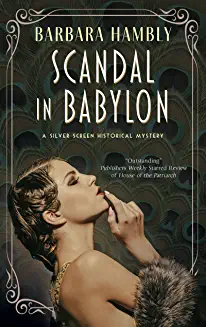
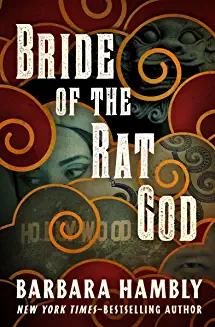
In fact, I was curious enough that I read the mystery, then went back to re-read the fantasy.
Now, I should say, I like this fantasy novel a lot. I liked it a lot the first time I read it and I still like it. The silly title is a deliberate riff on early silent films, particularly films that aren’t very good, so don’t let yourself be put off because of the title. The setting of both books is identical: Hollywood in the 1930s during the making of a not-very-good silent film and almost all the characters are involved somehow with the film industry.
So, now, once you get beyond the setting, how similar are these two books? In some ways, they are very similar!
The characters are as follows:
Emma/Norah – a British woman of good family, Emma/Norah married a Jewish man, Jim, who very soon thereafter died in the war. Her brother, Miles, also fought in the war and returned very badly hurt. Her immediate family then died in an influenza epidemic, more distant relatives cut her off because she married a Jew, and Emma/Norah lost everything. She too was very sick, and when she recovered, she had no choice but to seek employment. She was employed as a companion by a demanding, hypercritical, unpleasant woman named Mrs Pendergast. That’s backstory. Emma/Norah, deeply lost in grief and without support, was on the verge of suicide when –
Kitty/Christine – Jim’s sister, an exceedingly beautiful young woman, sweeps in and rescues Emma/Norah. Kitty/Christine, despite her total lack of acting ability, has parleyed her looks plus her cheerful willingness to sleep with Hollywood producers (as well as any handsome young man who catches her eye) into a major film career. She is a featherbrain, but not without a certain native cunning. And she is genuinely kind. She also owns three Pekinese: Chiang Ming, Black Jasmine, and Buttercreme.
The dogs, while well drawn in both books, play a very minor role in the murder mystery, but an absolutely crucial role in the fantasy novel. It turns out that little lion dogs like these were in fact bred to hunt and kill demons. When a demon turns up, they first alert and protect, but if the danger becomes greater, they turn into lion-sized demon-hunting Fu-Dogs. You absolutely want these little dogs around if you are threatened by, for example, a demon known as the Rat God. Naturally I was delighted by the role of the dogs in the fantasy novel and therefore not keen on their necessarily much reduced role in the murder mystery. In the mystery, they’re just little dogs who happen to be around in some scenes. They bark now and then. That’s it.
In addition to the above, we have
Zal/Alec, a cameraman, Jewish, with a steady temperament, fast reflexes in a crisis, and an inclination to make modest, kind advances toward Emma/Norah. I think Zal comes off a bit better than Alec, but both are perfectly decent male leads for the romance subplot. That subplot is both simpler and stronger in the mystery, as Hambly hands Emma, but not Norah, an invitation to go back to Oxford and settle into a quieter, calmer, much more respectable life. Emma’s character arc therefore involves an important choice about her future in a way that Norah’s just doesn’t.
Another secondary character, the producer of the film, is largely unimportant in the fantasy novel, but a major red herring in the murder mystery. We also have an elderly admirer of Kitty/Christine, who is entirely unimportant in the fantasy novel, but a crucial secondary character in the murder mystery. Shifting importance in the other direction, an elderly Chinese man is barely present in the murder mystery but plays the role of the Sage Who Understands Demons in the fantasy novel. The cursed necklace that marks you as the rightful prey of the Rat God is just a necklace in the mystery.
Both books begin with a scene from the movie in progress. In the murder mystery He swept her into powerful arms and pressed his lips to hers as she gasped and struggled to turn her face aside. The necklace, though totally unimportant, does gleam around Kitty’s throat in that scene. In the fantasy novel, Christine stumbles to an exhausted halt at the top of a cliff, raises a hand to the necklace she wears, and shortly thereafter topples to her doom. Both stories bring you into the world of 1930s Hollywood, the frenetic pace of filming, the crazy mishmash of colliding fictional and real worlds. Of course, the fantasy novel hands you a fantasy plot with Fu-Dogs and Rat Gods and all the trimmings. The mystery is just a mystery.
Barbara Hambly has written a good many mysteries at this point, since the Benjamin January novels are mysteries as well as amazing historicals. Under the name Barbara Hamilton, Hambly also wrote three historical mysteries where Abigail Adams is the protagonist. Plus the vampire novels have a mystery component – all of them, I think, but certainly most of them. (Simon Ysidro is, by the way, my very favorite vampire in all of fiction.)
As a rule, the mystery itself is not as important to me – and I think not as important to Hambly – as the setting and the characters. In the “Barbara Hamilton” mysteries, the mystery itself was never that mysterious. That was much less true here, as I didn’t have a clue who had framed Kitty for murdering her ex-husband until the end. I think the clues were there, but thoroughly hidden behind the red herring and even though I didn’t buy the herring, I couldn’t see what was really going on. So, a pretty good mystery in that respect. In contrast, the reader would have to be EXTREMELY DIM not to catch on to the basic outline of cursed necklace / demon / demon-hunting dogs / Chinese sage. Not a subtle story at all in that regard, but certainly fun and well-written, and the B-movie plot fits the setting perfectly.
So … I guess I’m giving both stories a thumbs up, and while I’m not sure why Hamby decided to pick up practically identical characters and setting and re-cast the story as a mystery instead of a fantasy, she did a good job with it. If you read Bride of the Rat God – wow, first published almost thirty years ago! – then I think there’s a good chance you’d get a kick out of Scandal in Babylon. And if you never read the earlier work, it really is interesting to read these two books back to back and see how Hambly handled the shift in genre.
Please Feel Free to Share:






The post Scandal in Babylon and Bride of the Rat God by Barbara Hambly appeared first on Rachel Neumeier.
April 3, 2023
Monday Update: Sometimes Life gets Cluttered
So, last week was of course rather stressful. Let me see. All right:
A) I was both busy and fretful on Monday and Tuesday — busy trying to get some stuff finished at work, fretting over Leda, who almost completely quit eating on Monday. She was in theory due Friday. Writing progress: minimal work on NO FOREIGN SKY.
B) Wednesday — a semi-emergency c-section. I didn’t think Leda looked terrible, but I wasn’t happy with her complete lack of appetite, and my vivid memory of how her grandmother lost two puppies out of three out of every litter because of premature labor didn’t help. I had been supplementing with progesterone for weeks to prevent premature labor, but still.
So, as I say, an early section. I took her up to Chesterfield and my reproductive vet did an ultrasound and said there was at least one dead puppy, but no way to tell when it had died. If it had died that morning, then the others could perfectly well die of whatever had killed it. If it had died a week ago, then whatever had killed it might or might not present a threat to the others. Two days early is pretty early, but I’ve done sections that early before and had no trouble. We agreed it was reasonable to do the section that day.
Result: four vigorous puppy of perfectly decent weights, 6.6 to 7.7 ounces — within the normal range for full-term puppies. Leda immediately began producing milk, though she had no real maternal instinct at the time.

C) Thursday was a quiet recovery day for both Leda and me. I wanted the puppies to nurse as much as possible because that causes the mother to release oxytocin and that causes both milk letdown and maternal behavior. I tube-fed a little, but left the puppies hungry so they would nurse. Long Wednesday night involving frequent checks on peeping puppies, long Thursday involving hanging out while keeping an eye on the puppies and Leda.
I also read a good bit of the second INDA book — it’s a series I’ve been wanting to re-read, and I’m slowly making progress on getting through it.
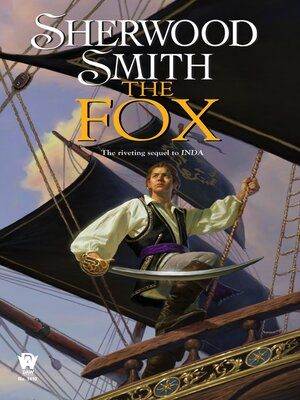
D) Friday and Saturday, I finished going over the paper copy of NO FOREIGN SKY and then tweaked the digital file, and thank heaven that’s done. I’m sending it to proofreaders now.
I’m now reading a paper copy of TASMAKAT. Much less tweaking, but a much longer book, so that’ll take a few days.
So, actually, I’m in a pretty good place with progress on upcoming books, though I certainly hope and expect to get to INVICTUS and revise that this month, preferably before May, which would put everything right on schedule for the year.
Whew, long week last week, but Leda’s maternal instincts are properly in by this time, she and the puppies are all doing well, I’m barely tube-feeding, and all is, I hope, going to be fine with the babies. I hope and expect to have a much calmer few weeks before the puppies actually get super, super distracting.
Please Feel Free to Share:






The post Monday Update: Sometimes Life gets Cluttered appeared first on Rachel Neumeier.
March 30, 2023
A Tuyo World Companion
Okay, so, when I said I was thinking of adding notes about the world of Tuyo on the series page, Sandstone (@quartzen on Twitter) pointed out that some authors put out a World Companion type of book, with notes about the world and characters, maybe a couple interviews with the author, plus a story or two that aren’t available anywhere else.
Whoa, I said. That is a fantastic idea, I said.
So, I still think it’s a good idea to put general world notes and a clickable list of characters — maybe one by novel, one by country, and one strictly alphabetical, or something — on the series page. But there is a pretty good chance I will put more extensive notes and other material, plus a story or two, into an actual World Companion, and publish that.
Naturally I have been working on that off and on because what else have I got going on, right? Actually, making alphabetical lists of characters has been about my speed now and again, when I’m distracted or tired or just don’t want to work on other things. Some characters get a brief but clear description, such as:
Rakasa inGeiro: son of Naroya, the inGeiro warleader, and Lutra, an inGeiro singer. We first meet Rakasa and his partner Bara in TUYO; they appear again in TARASHANA.
Other characters get spoiler-free comments, such as:
Harapta: A Lakasha man with a complicated backstory.
That’s so that people can in theory flip through the World Companion after reading TUYO, without being seriously spoiled for any of the other books.
But I’m also writing up notes about time and measurement, and just general notes about each of the peoples that we’ve met so far. The inGara vs the taiGara, for example; and the completely different meaning of Lakasha-erra vs Lakasha-asei. Stuff like that. The different kinds of wives and widows in Lau society. All that kind of thing.
I’m also writing a section on “interview questions” that I think might let me address the sorts of questions that readers might have. But I’m not telepathic, so hey! If there are any questions any of you would like to see answered, toss ’em my way. I will be quite interested to see what people ask, so please don’t hesitate.
And yes, I have started what should be a shortish story, hopefully around 15,000 words (fifty pages), which can be included in a book like this. It’s the story in which Garoyo returns Hokino’s knife to him, so it takes place during the warm season after TARASHANA. I had trouble starting it at first until I realized it should be from Arayo’s point of view. THEN I had trouble because I started it in first person, realized that probably it ought to be in third, and had to rework the narrative.
That story isn’t moving especially fast, not like TANO, but I think it will most likely get written. Arayo is fairly clear to me and I believe I have a reasonably clear idea of the plot, plus a crucial late scene. Tano and Raga are secondary characters in this story, along with Garoyo and Hokino, of course.
Hopefully this story will move ahead but cooperatively finish at about 50 pages. I most certainly do not intend to let it turn into a 400-page novel.
Ideally I would like to actually finish this project and bring it out before TASMAKAT, but no promises. Pretty sure I can get the world notes linked from the series page by that time, though.
Anyway, I would welcome suggestions for material that you might like to see in a book like this.
Please Feel Free to Share:






The post A Tuyo World Companion appeared first on Rachel Neumeier.
Recent Reading: The Unsinkable Greta James
So: The Unsinkable Greta James
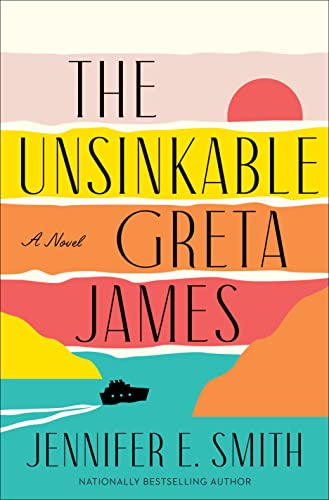
“A Novel.” Do you see that? Small, italicized, off to the side? What does “A Novel” imply to you?
Here’s what it should imply: Not a romance. Because … it’s not a romance. We all know the fundamental requirement for a romance is a HEA (happily ever after) or sometimes a HFN (happily for now) ending, and, spoiler, but I’m betting the reader might prefer to know up front that although the ending is fine, it’s neither of the above. It’s not like it’s a sad ending, or at least I didn’t take it that way, but it’s not the ending of a romance novel.
Nor is the central relationship in this story the romantic relationship. That is secondary, or even tertiary. The primary relationship is the daughter/father relationship. From the description, I knew that was important. But if this novel were a romance, then the daughter/father relationship would have been secondary, whereas it’s really primary.
So, what about that relationship?
The author made this work better for me than I might have expected, considering that it was a pretty bad relationship to start with. It’s interesting because Greta thinks, and says explicitly, that the bad relationship is almost entirely her father’s fault … and she’s right! It totally is! I would not have expected that. I’m not sure what I think of setting it up that way. It flattens Greta’s character arc because her role is to understand and forgive her father’s pretty dire parenting mistakes, not to realize that his mistakes were actually not as dire as she thought when she was twelve.
His mistakes, by the way, involved failure to realize his daughter was her own person and was never going to be his clone, followed by failure to recognize her success as, basically, a rock star. I certainly understand a parent’s desire for a child to have a Plan B rather than pin all their hopes and dreams on being a rock star. But her father was astoundingly unsupportive given his daughter’s obvious level of commitment, and continued being unsupportive as she actually became successful. So his mistakes were indeed pretty bad.
But were his mistakes unforgiveable? I’m interested to see that some reviews come down on the “yes” side on that question. To me, the answer is obviously “no.” Being unsupportive out of fear that his child will crash and burn and have a much worse life than he wants for her … that’s definitely forgivable. As far as I’m concerned, unforgivable includes fathers like Yaro inTasiyo, not fathers like Greta’s. So for me, it’s important that the main arc of this story is toward … not understanding. Greta understands her father pretty well. But acceptance on both sides, and forgiveness primarily from her toward her father.
The author made this work for me, and since I like story arcs involving redemption and forgiveness, that means I wound up liking this story quite a bit, even though I was quite surprised to discover it wasn’t a romance.
So, what about the romance subplot?
It was believable, I liked both participants and how they were with each other, and I would have preferred an ending that led toward a future happily ever after for the two of them, instead of an ending that was utterly, completely open ended. That’s because I really do appreciate romances.
However, I actually also liked the actual ending. It was certainly different to read a novel where the female lead not only thinks that honestly, she’s fine on her own, but in fact that’s true, she really is fine on her own. That may be a first. I think if I’d been writing this, I might have come down even more solidly on the “fine on her own” ending. Greta is putting her music first. She really is. I think that’s a perfectly legitimate choice. Since that basically never happens in fiction, good for her, and good for the author, writing it that way.
What else?
When this story opens, Greta’s mother is very recently deceased. I started this book the day before MY mother was due to have surgery, and at once stopped. A recently deceased mother in the backstory was not going to work for me right then. But I picked it up again after everything went well. Having finished the story, I have to say, it’s interesting to me that one of the most powerfully drawn characters is actually the deceased mother. She’s considerably better developed than the clutter of elderly couples, for example, even though she’s not there.
I’m sure there are other stories where someone recently deceases is so very present … well, of course, TANO, but I’m thinking of present in a good way. I really liked Greta’s mom. And I loved how memories of Greta’s mom led into the very last scene of Greta’s dad. That brought the story to a satisfying conclusion even in the absence of the romance ending.
Please Feel Free to Share:






The post Recent Reading: The Unsinkable Greta James appeared first on Rachel Neumeier.



